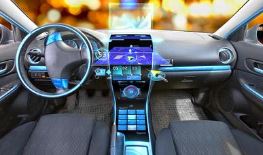Cameras and visual sensor algorithms are the core of ADAS advanced driver assistance calibration equipment, and there is a big difference between front-end and rear-end
The camera isADAS advanced driver assistance calibration equipmentCompared with millimeter-wave radar and lidar, the biggest advantage of core sensors is recognition (is the object a car or a person, what color is the sign). The automotive industry is price-sensitive, and the cost of camera hardware is relatively low. Due to the rapid development of computer vision in recent years, the number of companies entering the ADAS segment from the perspective of cameras is also very considerable.
In the ADAS vision supply chain system, vision solution providers master the core vision sensor algorithms and provide downstream customers with a complete solution including vehicle camera modules, chips and software algorithms. In the pre-installation model, vision solution providers play the role of Tier 2 suppliers and work with Tier 1 to define products for OEMs. In the after-installation model, in addition to providing a complete set of equipment, there is also a model of selling algorithms.
Since the threshold for product certification in the aftermarket is relatively low, and since aftermarket ADAS is moderately priced, highly compatible, and has low installation costs, many companies adopted aftermarket ADAS products in the early stages of the ADAS market. However, most aftermarket ADAS use cameras as the main carrier, and use external devices to achieve the functions of warning, monitoring, and reminders. Car manufacturers do not open the bus protocol in the car to these manufacturers, making it impossible for them to obtain higher permissions, interact deeply with the vehicle, or even interfere with the driving mechanism. Therefore, under the demand for deep interactive experience, pre-installed ADAS was born. In high-end vehicles and commercial markets, mature ADAS systems require car companies and ADAS manufacturers to invest a lot of R&D efforts, and only after calibration and calibration can they obtain higher accuracy. Pre-installed products do have more advantages in precision, accuracy, and interactivity.

Related News
- How does the dynamic four wheel aligner avoid communication interference?
- Introduction to vehicle electrical inspection
- How to choose a good pass four wheel aligner
- What is the assembly line
- The important role of the through four wheel aligner
- The four main points of 3D laser four wheel aligner maintenance
- Working principle of electric chassis dynamometer
- Vehicle off-line comprehensive diagnostic equipment
- How to choose a good dynamic four wheel aligner
- Precautions for selecting a non-contact four-wheel aligner
- Don't underestimate the high-speed ABS brake test bench
- Development module for ADAS advanced driver assistance calibration equipment
- How to maintain ABS brake system to prevent failure
- How to choose a non-contact 4-wheel aligner
- The structure of non-contact 4-wheel alignment instrument
- What are the characteristics of DSP technology of 3D laser 4 wheel alignment?
- The Excellence of 3D Laser 4 Wheel Alignment
- Installation and maintenance of 3D laser 4 wheel alignment
- Current status of comprehensive vehicle off-line diagnostic equipment
- The power of 3D laser 4 wheel alignment
